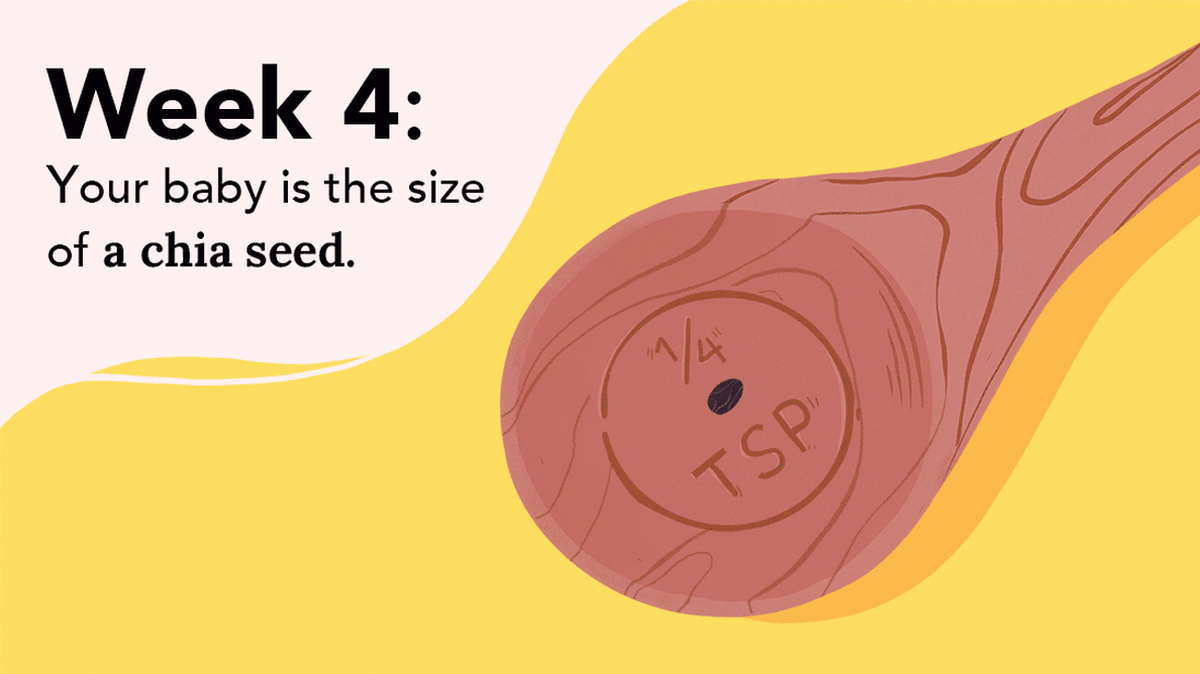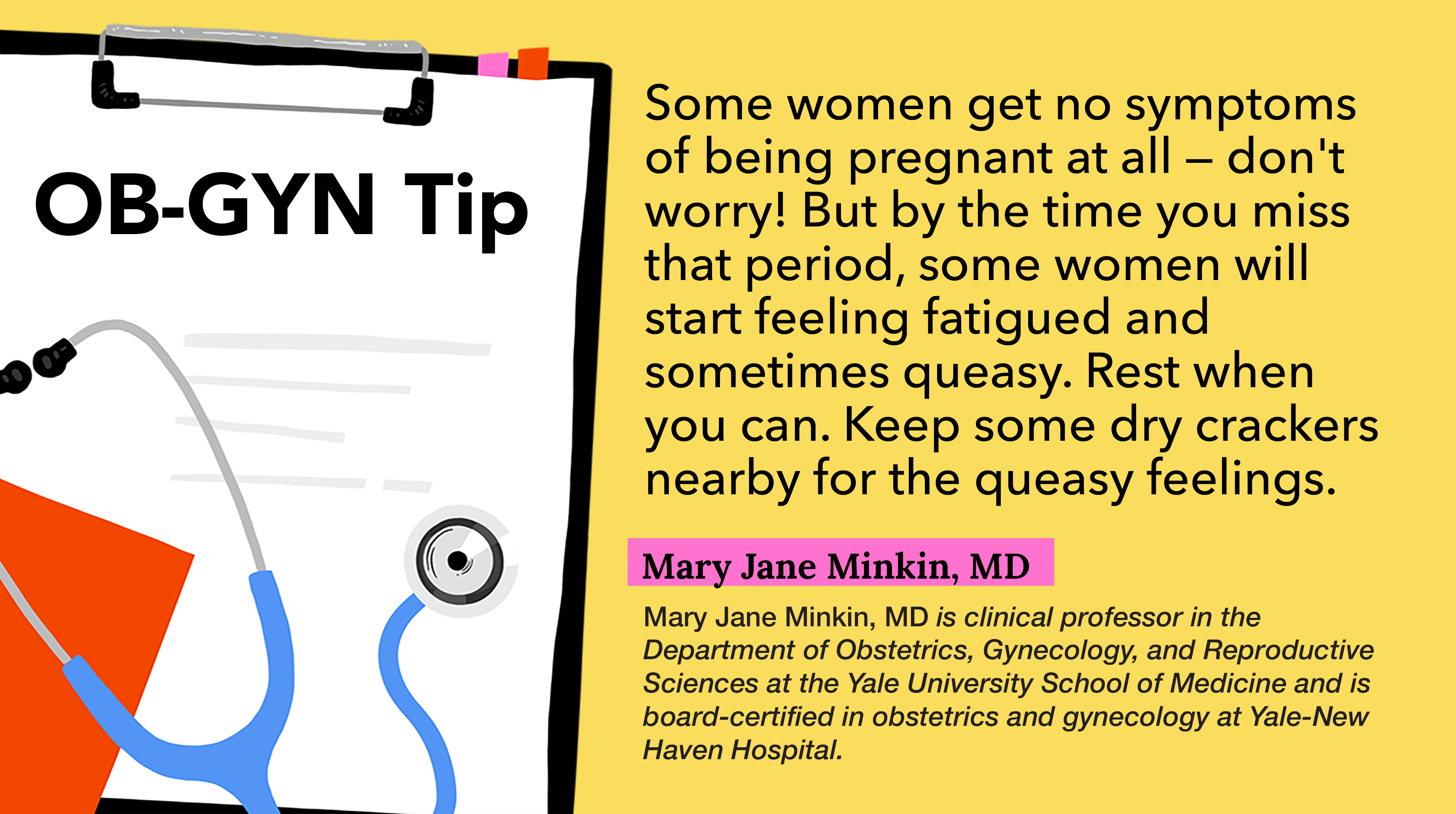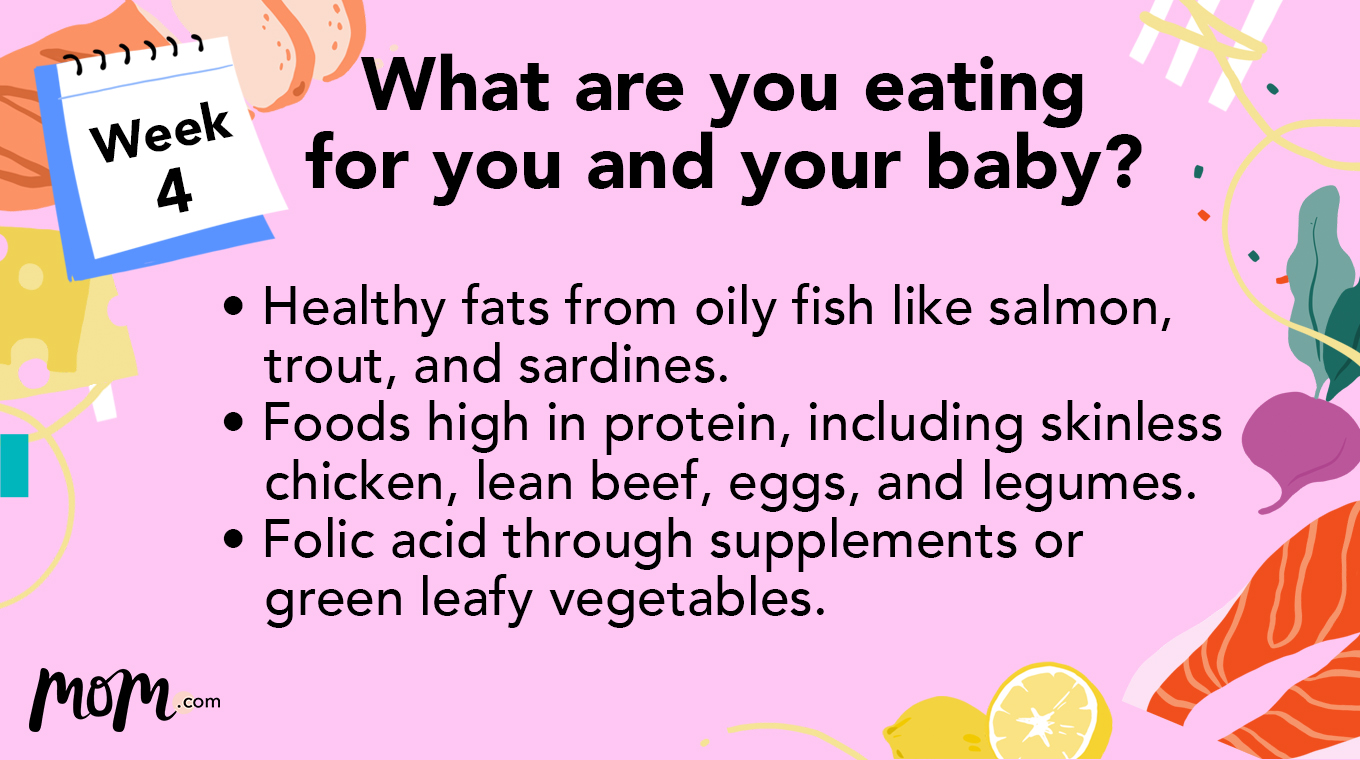
In this article
You’re 4 weeks pregnant!
Congratulations! You’re four weeks pregnant, and your baby is about the size of a chia seed. Your adorable bunch of cells is now officially an embryo and has traveled from your fallopian tubes as a blastocyst to your uterus and then implanted itself after burrowing into your uterine lining. For many women, this is when they first start wondering if they are pregnant due to a late or missing period.
Since most women find out they’re pregnant between four to seven weeks, this is around the time you would likely take a pregnancy test. The most sensitive pregnancy test on the market can be taken six days before the first day of your expected period. Make sure to use your first-morning urine because it will contain the highest amounts of the hormone human chorionic gonadotropin (HCG), the hormone that tests use to indicate whether you’re pregnant or not.
If you test negative, it may possibly be because you are still too early in the pregnancy to make detectable amounts of HCG. You can try to take a pregnancy test a few days later to see if you’re pregnant.

Pregnancy symptoms at 4 weeks
Are you not feeling pregnant at four weeks? Don’t worry. While some women can immediately detect the changes in their body, according to Kelly Kasper, M.D., obstetrics & gynecology at Indiana University Health, most expectant mothers won’t notice much difference in their bodies in the first month. “In fact, many women may not even know that they are pregnant if they aren't keeping track of their cycles," Dr. Kasper said.
Because many of the pregnancy signs at four weeks are very similar to PMS and symptoms of menstruation, many pregnant people can’t reliably distinguish the difference without a positive result on a pregnancy test.
Here are some pregnancy symptoms at four weeks you may notice:
- Breast tingling and tenderness
- Fatigue
- Increased urination
- Bloating and cramping
- Light spotting as the embryo implants itself in your uterus
- Morning sickness (nausea and/or vomiting)
- Basal body temperature stays high
- Other PMS-like symptoms
What does 4 weeks equal in months?
Pregnancy math can seem really confusing — especially if you’re used to the popular misunderstanding that a pregnancy is nine months long. In fact, a pregnancy is 40 weeks — and you’re not even pregnant for the first two weeks! (Incidentally, only about 30% of pregnancies reach that 40-week mark.) That’s because pregnancies are calculated from the first day of your last period since that is a definable event most people remember, but few people know the exact day and time of conception or ovulation.
However, because 40 weeks is not easily divisible by three to split into trimesters, you can see why it can get confusing real quick. Each trimester is about 13 to 14 weeks long, and at four weeks pregnant, you’re in your first trimester. Here’s a quick primer for what pregnancy weeks equal to in months during your first trimester:
- Month 1: Weeks 1 to 4
- Month 2: Weeks 5 to 8
- Month 3: Weeks 9 to 13
Your ultrasound
You would not normally be getting an ultrasound in your fourth week of pregnancy because most obstetrical exams and visits for pregnancy are scheduled at about eight to 10 weeks gestation. OB-GYN Dr. Mary Jane Minkin told Mom.com that though you can sometimes see a little bit in the uterus on a transvaginal ultrasound when your period is one week late, “it's better to get a look when you are two weeks late, when you really can start seeing something definitive.”
Your pregnant belly at 4 weeks

For the next six weeks, your fetus will begin developing its organs, connective tissue, and nervous system. At four weeks and the size of a chia seed (or approximately 1mm), the outer layer of your fertilized egg is implanting itself in your uterine lining. Up to 25% of the time, this burrowing into the uterine wall will cause implantation bleeding — a very slight or light pink, light red, or light brown discharge or bleeding earlier than when you would expect your normal period.
During this implantation, the outer layer of cells will create space to link with your blood supply so your body can provide oxygen and nutrients to your embryo. An amniotic sac (bag of waters) will form around the embryo — along with a yolk sac — and will later become part of your baby’s digestive tract.
The inner layer of embryonic cells will then form two layers — and then three layers — of cells that will eventually develop into specialized parts of your baby. The three layers of the embryo include:
- Endoderm (inner layer) – will become the respiratory (lungs) and digestive systems (stomach, gut, bladder), and liver
- Mesoderm (middle layer) – will become the circulatory system (heart, blood vessels) and musculoskeletal system (muscles and bones), and sex organs
- Ectoderm (outer layer) – will become the central and peripheral nervous system (brain, spinal cord, nerves), hair, eyes, teeth, skin, and nails
Pregnancy tips at 4 weeks
Make an appointment this month with your OB-GYN, midwife, or prenatal care provider to confirm your pregnancy, figure out your estimated due date (EDD), discuss your health care, and schedule out your regular prenatal care visits since oftentimes if you wait, the schedules will fill up (or you will forget).
You can also determine your EDD very easily by yourself. There are many online calculators available — or you can add 40 weeks to the first day of your last period. Keep in mind that the EDD is just that: an estimate. Babies will come when they come — and a normal range is any time between 37 to 42 weeks. Depending on whether this is your first child or not can also influence the delivery date.
Your pregnancy checklist at 4 weeks
At four weeks, if you haven’t already taken a pregnancy test, make sure you take one to confirm whether or not you’re pregnant. If your over-the-counter pregnancy test is positive, make an appointment with your OB-GYN for your first in-person appointment. As with previous weeks, your four week pregnancy checklist contains the following:
- Quit smoking, drinking alcohol, and/or taking drugs.
- Stop (or significantly cut down) consuming excessive caffeine (e.g., more than five cups of caffeine a day).
- Check with your doctor about which medications or supplements are safe to use during pregnancy.
- Consult with your doctor to see if you should get any vaccines such as for the flu, coronavirus, or whooping cough (T-dap) to protect yourself and your baby.
You might also want to avoid secondhand smoke from the people around you — even if you personally do not smoke. According to research, babies born to mothers exposed to secondhand smoke while pregnant are more likely to:
- Have lower birth weights (not be as healthy)
- Die from sudden infant death syndrome (SIDS)
- Have weaker lungs, increasing the risk for a multitude of health problems
Secondhand smoke might also increase your risk of miscarrying, having an ectopic pregnancy, as well as other complications.
What are you eating for you and your baby?

As the sole source of nutrients for your baby, ensuring a healthy diet as well as adding doctor-approved supplements and vitamins is very important to both your and your fetus’ overall health and development.
Here are some nutrients you need to add to your diet now that your baby is dependent on you for growth and development:
Healthy fats
Your baby’s brain and eye development require essential fats like DHA, an omega-3 fatty acid. You can get your DHA from supplements, prenatal vitamins, and even a vegetarian DHA from flaxseed. To get DHA from foods, try fatty, oily fish such as salmon, trout, and sardines, seaweed, dairy, grass-fed meat, or omega-3-enriched or pasture-raised eggs.
Lots of fluids
Because your body is making amniotic fluid, blood, tissue, enhancing digestion, and carrying a lot of nutrients to and waste away from your baby, you will need to up your fluid intake.
Protein
For healthy tissue growth and development, and antibody, hormone, and enzyme production in your fetus, you’ll need to eat three servings of protein a day. Some foods high in protein are skinless chicken, lean beef, eggs, fish, dairy, nuts, or legumes.
Folic acid
Folic acid, a B vitamin, is vital for the development of the neural tube, central nervous system, and brain development. You can get the recommended dosing through supplements or through foods such as green leafy vegetables, broccoli, chickpeas or kidney beans, nuts, and oranges or strawberries.
When to call your doctor
In general, if you have unbearable nausea with vomiting or are bleeding at four weeks pregnant, please contact your doctor immediately.
Or if you are experiencing sharp abdominal, pelvic, neck, or shoulder pain as well as light to heavy vaginal bleeding, dizziness or fainting, or rectal pressure, you could have an ectopic pregnancy — when the fertilized egg implants itself outside of the uterus like in a fallopian tube. While most symptoms of ectopic pregnancy aren’t obvious until about six to eight weeks, it’s still good to know the signs.
According to the Centers for Disease Control and Prevention (CDC), pregnant people are at a higher risk of severe illness from COVID-19 and death compared to non-pregnant people. Furthermore, pregnant women with COVID-19 are at increased risk of delivering a baby before 37 weeks (preterm birth) and other adverse ramifications.
Note: If you are visiting a medical professional during COVID, make sure to ask about the facility's safety measures and confirm that they are following COVID protocols as indicated by the CDC.
Additional considerations
Many LGBTQIA+ people who are pregnant or trying to conceive can run into a lot of erasure, discrimination, or general lack of knowledge regarding their unique needs, risks, and health experiences when working with prenatal or reproductive healthcare providers. Whether it is a guide to assisted human reproduction (AHR) like this one for Canadians, resources for the LGBTQIA+ community wanting to build a family, here are a few online resources to help you find a LGBTQIA+ friendly healthcare provider:
Gay and Lesbian Medical Association (GLMA)
Are you looking for health-care providers who are not only welcoming to LGTBQIA+ folks but are also knowledgeable about your particular health risks, needs, and concerns? The GLMA provider directory can help.
World Professional Association for Transgender Health (WPATH)
To help find transgender-affirming providers, check out WPATH’s online provider directory.
Out2Enroll
Out2Enroll connects LGBTQIA+ people to gender-affirming insurance coverage options for health insurance. The site primarily concentrates on Affordable Care Act plans and also directs people to local financial assistance and insurance advisory organizations.
One Medical
One Medical is a national primary care provider that offers the services of health-care professionals who are experts in LGBTQIA+-specific health matters and considerations.






